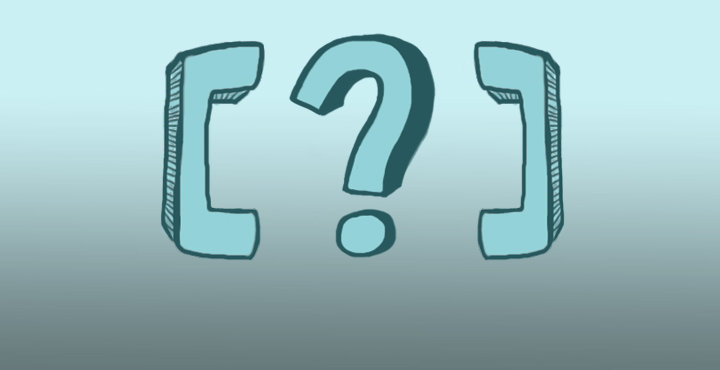Learn how to use brackets effectively in your writing
Let me give you folks a glimpse of life at Scribendi.com. When we're not madly editing until the wee hours of the morning (which, frankly, we are most of the time), we spend the rest of our time discussing and writing articles designed to help you (our wonderful customers) become better writers.
When I was assigned the article on brackets, I was overjoyed (okay, not really). Truthfully, I wasn't sure how I was going to write an entire article on brackets, but, as I discovered in my research, brackets are actually more complex than most people realize.
Square Brackets
Sometimes, square brackets are used to make a piece of text clearer. When a quote used in a paper contains the word "it," the author of the paper will frequently use brackets to clarify the antecedent. This is done for a number of reasons, but most frequently because when a writer uses a quote in a paper, the reader is encountering the quote out of its original context and since readers rely on context to determine the antecedent, the antecedent needs to be provided. For example:
Blanche Dubois states that "While Benjamin Franklin is frequently credited as discovering it [electricity], the ancient Egyptians actually deserve most of the credit."
Square brackets are also used to enclose the Latin word sic, which means "so, thus." In academic writing, [sic] is used to denote an error that originally appears in the source material and is not attributable to the author who is using the quote. For example:
In a letter to the CK Daily Post, General Ross wrote that "extended tours of duty are not beneficial for maintaining a positive group moral [sic]."
Square brackets are also used to indicate that a certain portion of a quote has been omitted.
For example, Gore Vidal is quoted as saying "Andy Warhol is the only genius I've met […] with an IQ of 60."
Curly Brackets
Unless you are a physicist or a highly skilled mathematician, you are unlikely to encounter curly brackets in your research or reading. If you're a programmer, you would most assuredly use these bygone little squiggly marks. But much like Hypercolor shirts or wearing spandex shorts for anything other than biking, curly brackets have largely fallen out of fashion. But just in case you do encounter curly brackets outside of the above-mentioned fields, they are likely indicating a series of equal choices. For example:
Select your pizza topping {pepper, onion, sausage, tomato, feta, anchovies, bacon, sun-dried tomatoes, chicken, broccoli} and follow me.
The only other place you may encounter curly brackets is on forums or when instant messaging. In this context, they are used to indicate a hug. The way the curly bracket is facing indicates the direction of the hug. A curly bracket that opens to the right is a right hug and a curly bracket that opens to the left is a left hug. For example:
AlaskanWolfHunter: hey, just thought id let u know im bringing home some flowers
({)WasillaMomof5: aw….thanks boo…(})
Angle Brackets
Also known as chevrons, these types of brackets frequently appear in mathematics and quantum physics. But unlike curly brackets, you may actually encounter them when reading outside of those disciplines, although not with any type of frequency. Angle brackets may occur in linguistics. For example:
The English word /kæt/ is spelled ⟨cat⟩.
Sometimes, although not often, angle brackets are used to indicate internal thought. For example:
Todd handed me a flower. "Smell it."
I took a sniff. "It's nice." <What a disgusting stench!>
Angle brackets are used frequently in comic books to denote someone speaking in another language. Double angle brackets are sometimes used in lieu of quotation marks. They are also used in computer-mediated communication to indicate an action or status. For example:
< <waves>>
<<offline>>
Conclusion
It's important not to overuse brackets or rely on them too heavily. Some writers use brackets in place of commas. Others think the whole problem of brackets is better left alone. But you can't avoid problems forever. At some point, you may have to use brackets or you may encounter them in your research, in which case, we hope this article has helped.
If you're still unsure about how and when to use brackets, you can always send your writing to the experts at Scribendi for a thorough, professional proofread.











